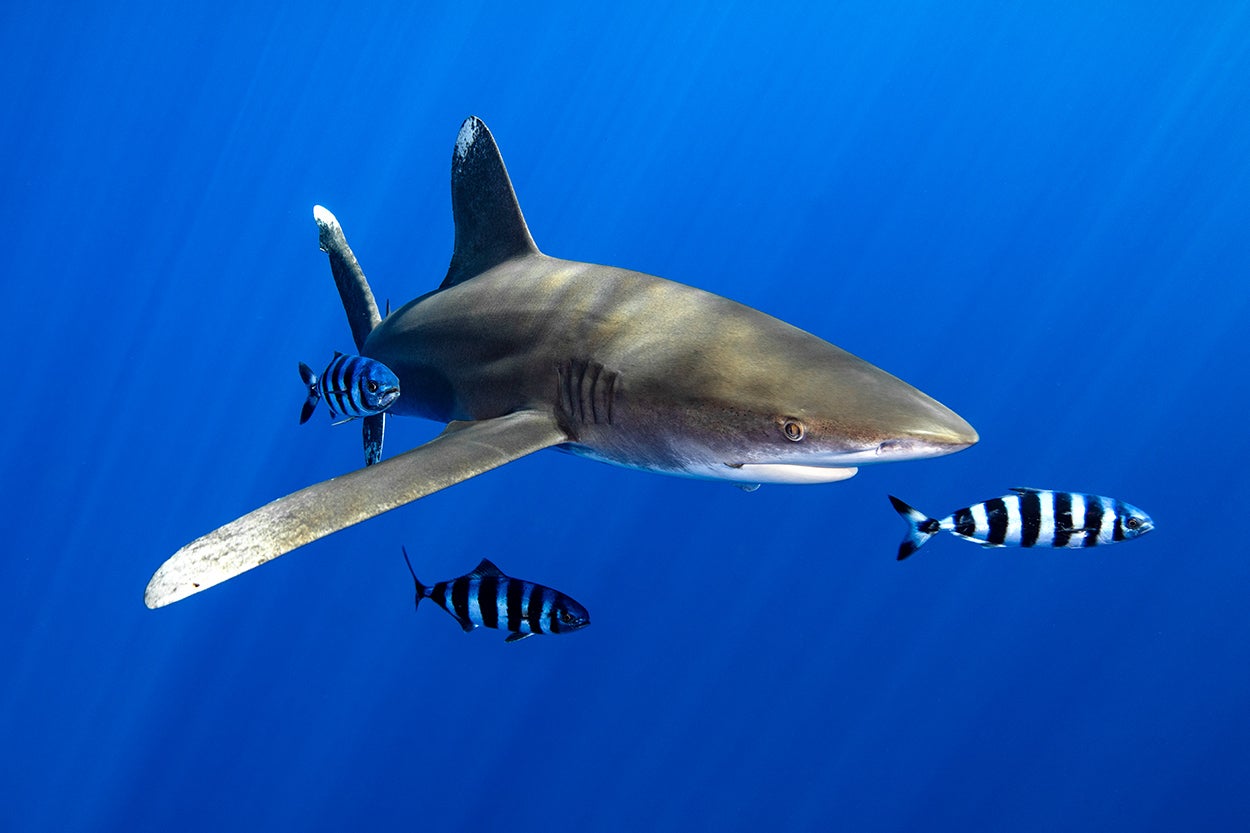Groups File Suit to Protect Threatened Oceanic Whitetip Sharks
Officials past due assessing shark population in Pacific fishing areas
Contact
Earthjustice filed suit today against the National Marine Fisheries Service on behalf of the Conservation Council for Hawai‘i and Mike Nakachi, a native Hawaiian cultural practitioner. The suit, filed in the U.S. District Court for the District of Hawai‘i, points out that the Fisheries Service is allowing Pacific longline fishing fleets to operate off Hawai‘i and American Samoa, even though the agency hasn’t completed the required science on the Western and Pacific oceanic whitetip shark population there.
“Oceanic whitetip sharks were listed as a threatened species in 2018, and back then the National Marine Fisheries Service cited fishing as the shark’s biggest threat,” said Earthjustice attorney Grace Bauer. “It’s now been four years. Unbelievably, the agency still hasn’t completed the science to make sure these large-scale fishing fleets aren’t killing too many sharks and endangering the species even further.”
Oceanic whitetip sharks and many other creatures are killed unintentionally as “bycatch” by longline fishing fleets that target other species, including tuna. The boats drag hook-filled lines stretching 28 miles to even 52 miles through the Pacific. The sharks are caught on the fishing line when they bite or ingest hooks — ending up as bycatch. Once caught, a shark may struggle for hours and die. Even if it is released alive, it may die later from stress, infection, or injury. Many other protected species end up as bycatch on these longlines, including sea turtles, sea birds, and marine mammals.
“We are out on the water in Hawai‘i all the time, and in our native tradition, we consider the sharks our sacred protectors,” Nakachi said. “We know that too many oceanic whitetip sharks are getting caught and killed, and that upsets the whole marine ecosystem.”
Oceanic whitetips were once one of the most abundant shark species in the Pacific Ocean. Sadly, due to overfishing, the population in the Pacific has plummeted by 80-95% since the 1990s and is teetering toward extinction. The Fisheries Service estimates that several thousand oceanic whitetips are caught each year in the Hawai‘i longline fisheries, American Samoa longline fishery, and U.S. tuna purse seine fishery.
As part of its legal duty to protect Western and Pacific oceanic whitetip sharks under the Endangered Species Act, the National Marine Fisheries Service must do biological assessments to determine what levels of fishing should be allowed in areas around Hawai‘i and American Samoa.
“We’re going to court because we’re tired of the Fisheries Service dragging its feet,” said Moana Bjur, executive director of the Conservation Council for Hawai‘i. “The agency has to do its job here and complete the science to protect whitetip sharks under the Endangered Species Act.”

Additional Resources
About Earthjustice
Earthjustice is the premier nonprofit environmental law organization. We wield the power of law and the strength of partnership to protect people's health, to preserve magnificent places and wildlife, to advance clean energy, and to combat climate change. We are here because the earth needs a good lawyer.